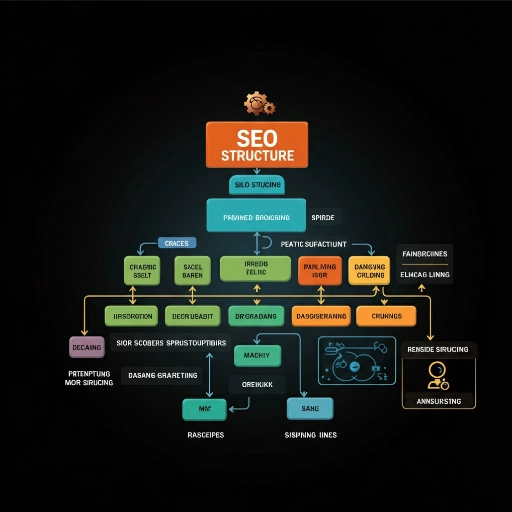
What is a Silo Structure?
A silo structure is a way of organizing your website’s content into distinct categories or topics, creating “silos” of related information . Think of it like organizing a library: instead of having all the books piled together randomly, you categorize them into sections like fiction, non-fiction, history, and science. Each section then has subcategories, and so on.
On a website, each silo contains a main page that acts as a central hub, linking to supporting pages that delve deeper into specific aspects of the topic . These supporting pages are also interlinked, creating a web of related information within the silo.
For example, if you have a website about gardening, you might have silos for “Growing Vegetables,” “Flower Gardening,” and “Landscaping.” Within the “Growing Vegetables” silo, you could have supporting pages on topics like “Choosing the Right Soil,” “Starting Seeds Indoors,” and “Pest Control.”
How Silo Structures Work
Silo structures work by creating a clear hierarchy and logical flow of information on your website . This helps both users and search engines understand how different pages relate to each other and what your website is all about.
For users, silo structures make it easier to navigate your website and find the information they need . They can easily drill down into specific topics and explore related content within a silo.
For search engines, silo structures help to:
- Improve crawlability: Search engine bots can easily crawl and index your pages when they are organized in a logical structure .
- Enhance topical relevance: By grouping related content, you establish your website as an authority on specific topics, improving your chances of ranking for relevant keywords .
- Increase PageRank flow: Internal links within a silo help distribute PageRank (a measure of a page’s importance) more effectively, boosting the authority of your pages .
Types of Silo Structures
There are two main types of silo structures:
- Hard Silos: These use the website’s URL structure to create physical folders that host each relevant page . This approach makes it very clear to search engines how pages relate to each other. For example, an e-commerce website might use a hard silo structure for its product categories, with URLs like
/products/electronics/smartphones/. - Soft Silos: These rely on internal linking to create a virtual silo structure . This approach is more flexible and can be used when the URL structure doesn’t allow for hard silos. For example, a blog might use a soft silo structure to group articles by topic, with internal links connecting related posts.
The choice between hard and soft silos depends on your website’s specific needs and structure. Hard silos offer a clearer structure for search engines, while soft silos provide more flexibility.
Key Takeaways
Silo structures are a powerful way to organize your website’s content and improve your SEO. By creating a clear hierarchy and logical flow of information, you can enhance user experience, boost your search engine rankings, and establish your website as an authority in your niche.
Related Posts
- This is the end of the road. Click the Read Our Blogs button below to get back to the main blogs section.
Frequently Asked Questions about Silo Structures
Listed below are some of the main areas you should have an understanding on about Silo Structures.